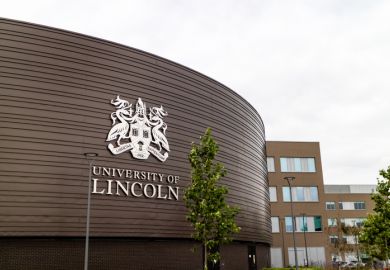Source: James Fryer
By failing to prevent cosy geographical cartels, the AHRC guaranteed a residuum of institutions that had no hope of forming well-integrated consortia
In October, with little fanfare, the Arts and Humanities Research Council announced its doctoral student funding plans for the next five years. Under the programme, a nominal pot of £164 million will be divided between 11 core consortia, known as doctoral training partnerships, and seven more specialist centres for doctoral training, bringing research-intensive universities together with museums, archives, media organisations and private firms.
The consortium model, imported from the Economic and Social Research Council, replaces a system of block grant partnerships made to individual institutions. The shift is entirely in keeping with coalition demands for research impact and “knowledge exchange”, and there is evidence that certain universities were aware of the shift even before it was signalled in the AHRC’s 2011-15 delivery plan, published in December 2010.
Whereas the old approach allowed departments to anticipate their PhD funding well in advance, today’s system introduces a second level of competition, forcing consortium members to vie internally for studentships each year. But this is nothing compared with the plight of five high-profile institutions – the University of Warwick and the University of London colleges Birkbeck, Queen Mary, Soas and the London School of Economics – that used to be funded but whose consortium, which also included the Institute of Education, was rejected.
The common feature of the successful consortia is their broadly geographical basis. On one level, this is surprising: a “frequently asked questions” document issued by the AHRC towards the end of 2011 emphasised repeatedly that “consortia do not have to be…geographically focussed”. Yet the fact that the council pressed this point home so thoroughly (and in at least three separate questions, by my reckoning) suggests that the process of consortium formation may already have begun to obey its own predictable logic by then.
The successful consortia involve 75 higher education institutions, compared with 96 under block grants. The decrease is not surprising. The number of research-intensives is finite and as some hook up, the partnership opportunities for those left behind, by definition, dwindle. According to Soas committee minutes, its consortium was still in flux in September 2011: the institution was undecided about partnering with either a few smaller London institutions or University College London and the School of Advanced Study. While other consortia also remained in negotiations at this point, there is no evidence of such uncertainty about their constitution.
Now let’s consider the successful Midlands Three Cities consortium. Warwick’s absence from this group, which features the universities of Leicester, Nottingham, Birmingham, De Montfort, Nottingham Trent and Birmingham City, is more than a little conspicuous. However, AHRC rules, which stipulate a maximum of 300 studentships per award, actively incentivise institutions to keep groups as small as possible, thereby maximising each partner’s share: the solo “consortia” successfully proposed by the universities of Oxford and Cambridge are only the most egregious examples.
So why were three post-1992s included in the Midlands consortium? Well, this will have boosted its “capacity building” credentials without shaking the research-intensives’ confidence that they will win the lion’s share of the studentships through internal competition.
By failing to prevent universities from slipping into cosy geographical cartels, the AHRC guaranteed a residuum of unattached institutions that had no hope of forming well-integrated consortia. In the final version of Warwick’s bid for the “London-Midlands Consortium”, which I obtained via a Freedom of Information request, it touts the superiority of the group’s “supra-local collective emphasis on research-oriented, postgraduate-focussed, diverse academic excellence” to mere “geographical convenience”. But, according to a statement from Birkbeck, AHRC feedback indicated that the funder was not convinced “of the vision for a consortium that brought together such distinctively generalist and specialist expertise”.
The Warwick-led consortium apparently remained unaware of its precarious position, believing as late as October 2012 that the AHRC could cut studentship numbers across the board rather than rejecting an entire group. But for faculty at, say, Queen Mary’s world-class English department, the reality is now all too apparent. Limited to offering a few internal studentships, it will spend five years struggling to recruit the best applicants. Meanwhile, those largely self-funded students who are successfully recruited will be at a competitive disadvantage in an increasingly savage academic job market, making for a knock-on reputational effect likely to last into the 2020s.
Far from being the inevitable result of constrained budgets, this wholesale departmental destruction is the product of a deeply flawed, ideologically driven programme and deserves to be recognised as such.
Register to continue
Why register?
- Registration is free and only takes a moment
- Once registered, you can read 3 articles a month
- Sign up for our newsletter
Subscribe
Or subscribe for unlimited access to:
- Unlimited access to news, views, insights & reviews
- Digital editions
- Digital access to THE’s university and college rankings analysis
Already registered or a current subscriber? Login





